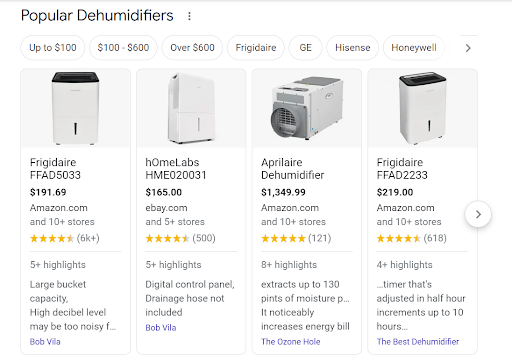- In organic search, there’s always someone trying to knock you down on the SERPs.
- To get and stay ahead of the competition, first identify your SEO competitors and analyze their rankings.
- Focus on SERP features, SEO best practices, user experience, and quality backlinks.
Organic search can be a bloody game. There’s always someone out there hoping to knock you out of your hard-earned SERP positions in favor of their own content. And you’re probably trying to do the same to them!
So what are the best strategies to gain (or keep) your place at the top? Gather your poisons and sharpen your knives, because the tips below are not for the faint of heart.
1. Identify and analyze the competition.
This probably seems obvious. Any good organic search strategy starts with knowledge-finding. In this case, you need to know who you’re up against.
But there’s more to it than you might think. As Search Engine Journal points out, not all of your brand competitors are SEO competitors. Just because they’re in your vertical or provide the same product or service doesn’t mean you need to worry about them in search.
So, when identifying your competitors, make sure you’re not just looking at brands with similar products or services, but rather brands with similar sites – e.g., similar Domain Authority, backlinks, and rankings. Through this metric, you can weed out low-priority competitors and uncover your true rivals. SEJ recommends that you focus on high-trending and high-ranking competitors.
2. Identify competitor keywords.
Once you’ve identified your SEO competitors, perform a competitor analysis to generate a list of keywords your competitors rank for. From here, you can begin targeting the competitor keywords most relevant to your content – and hopefully, knock your rivals out of place!
One tip we often recommend is to target at least some long-tail keywords. Many organizations laser-focus on keywords with the highest search volume since these are the keywords most people are searching for. But generally speaking, the higher the search volume, the higher the competition for that keyword. Long-tail keywords have lower search volume but are also typically less competitive – i.e., easier to rank for.
Learn more about what long-tail keywords can do for your organic SEO strategy.
3. Optimize for SERP features.
By now, you’re probably well aware that the layout of a SERP changes depending on the type of search query you enter. In its efforts to deliver the best user experience possible, Google has gotten better at delivering results tailored to specific search intents. For example, someone searching “best dehumidifier” likely intends to make a purchase or at least research a specific product. That’s why the SERP features product results, both as ads at the top of the page and organic results further down.


SERP features like this exist for virtually every type of search you can imagine, and they’re often evolving. Understanding the different SERP features and the types of search queries that trigger them allows you to optimize your content for certain features.
One of the most effective ways to leverage SERP features is to optimize for featured snippets. Our favorite way to do this at RMG is to run a Featured Snippet analysis. First, we find competitor featured snippets for keywords our client could realistically rank for. Then, we identify any existing content the client could re-optimize to try to win the Featured Snippet or recommend new content to target the Featured Snippet if no relevant content exists.
4. Optimize your user experience.
Since the user experience is so important to Google, it follows that sites optimized for UX will perform better in search. As you analyze your competitors for keywords and SERP features, pay attention to ways you can outshine their UX as well. This starts with following the UX best practices below:
- Optimize our page speed – slow-loading pages provide a poor user experience
- Use engaging, high-quality images with small file sizes
- Use good linking structures – relevant internal links and high-quality external links
- Include proper headings (H1s, H2s, etc.)
- Include relevant CTAs
5. Optimize your backlinks.
Link building is a crucial part of off-page SEO. The more high-quality domains linking back to your content, the more authoritative your content looks to Google. So, acquiring quality backlinks (and avoiding low-quality links) is a great way to increase your chances of outranking competitors.
Need some backup?
If you’re following SEO best practices in your content, you’re already well on your way to standing out in the SERPs. But truly killing the competition requires dedication, creativity, and a sharp eye for changes in the search engine landscape. While the tips in this list are a great start, partnering with an expert can help you not just get to the top, but stay on top. Reach out to the team at RMG today – we never shy away from a challenge!




